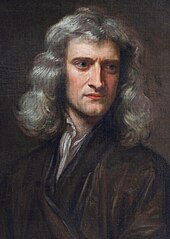Inspiration, pure and applied mathematics, and aesthetics
Main article: Mathematical beauty
Mathematics arises from many different kinds of problems. At first these were found in commerce, land measurement, architecture and later astronomy;
today, all sciences suggest problems studied by mathematicians, and
many problems arise within mathematics itself. For example, the physicist Richard Feynman invented the path integral formulation of quantum mechanics using a combination of mathematical reasoning and physical insight, and today's string theory, a still-developing scientific theory which attempts to unify the four fundamental forces of nature, continues to inspire new mathematics.[32]
Some mathematics is only relevant in the area that inspired it, and is
applied to solve further problems in that area. But often mathematics
inspired by one area proves useful in many areas, and joins the general
stock of mathematical concepts. A distinction is often made between pure mathematics and applied mathematics. However pure mathematics topics often turn out to have applications, e.g. number theory in cryptography. This remarkable fact that even the "purest" mathematics often turns out to have practical applications is what Eugene Wigner has called "the unreasonable effectiveness of mathematics".[33]
As in most areas of study, the explosion of knowledge in the scientific
age has led to specialization: there are now hundreds of specialized
areas in mathematics and the latest Mathematics Subject Classification runs to 46 pages.[34]
Several areas of applied mathematics have merged with related
traditions outside of mathematics and become disciplines in their own
right, including statistics, operations research, and computer science.For those who are mathematically inclined, there is often a definite aesthetic aspect to much of mathematics. Many mathematicians talk about the elegance of mathematics, its intrinsic aesthetics and inner beauty. Simplicity and generality are valued. There is beauty in a simple and elegant proof, such as Euclid's proof that there are infinitely many prime numbers, and in an elegant numerical method that speeds calculation, such as the fast Fourier transform. G.H. Hardy in A Mathematician's Apology expressed the belief that these aesthetic considerations are, in themselves, sufficient to justify the study of pure mathematics. He identified criteria such as significance, unexpectedness, inevitability, and economy as factors that contribute to a mathematical aesthetic.[35] Mathematicians often strive to find proofs that are particularly elegant, proofs from "The Book" of God according to Paul Erdős.[36][37] The popularity of recreational mathematics is another sign of the pleasure many find in solving mathematical questions.

Tidak ada komentar:
Posting Komentar